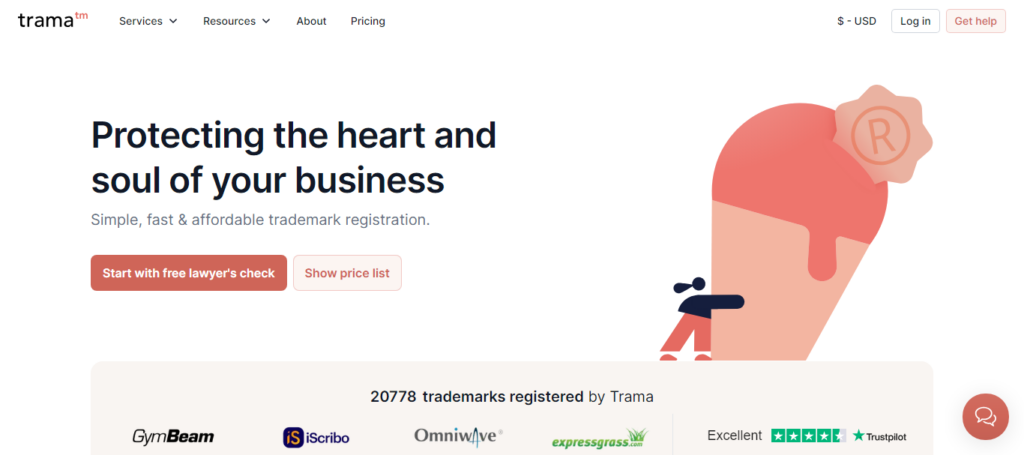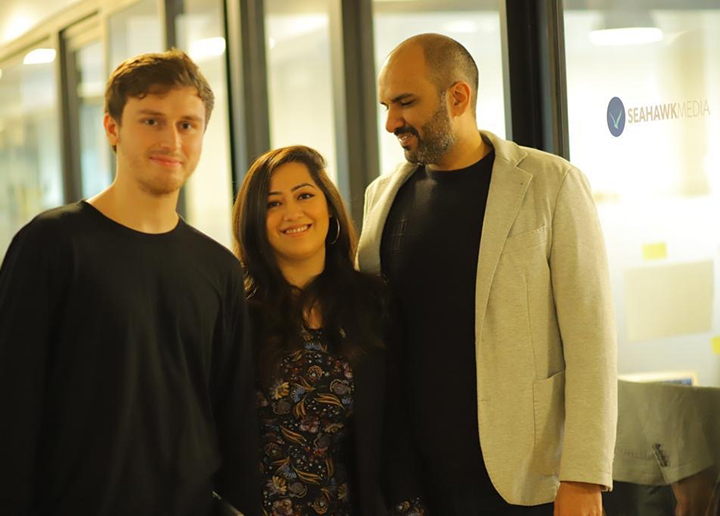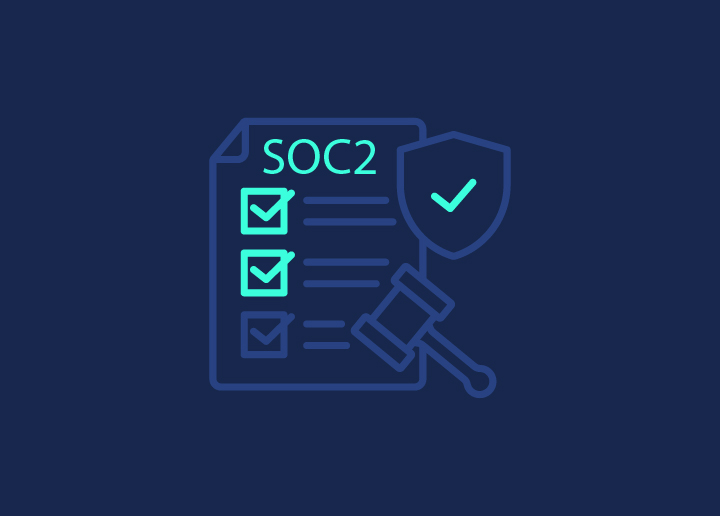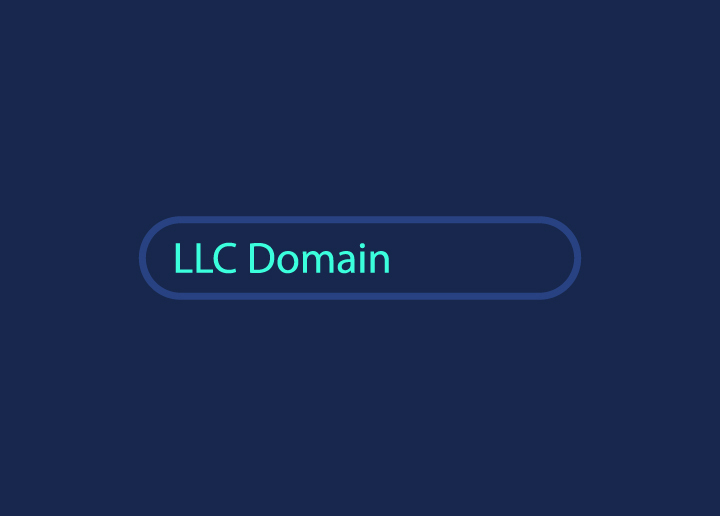Did you know that approximately 21% of new businesses fail within their first year, and many of these failures can be attributed to vulnerabilities such as lack of trademark protection?
Trademark registration is crucial for safeguarding your brand’s identity and reputation against infringement and loss. Each year, about 595,000 businesses close their doors, often due to challenges that could have been mitigated with better protection strategies.
Our comprehensive guide explains the global trademark registration process, including key methods like the Madrid Protocol and Direct National Applications.
Additionally, we recommend hiring a professional to navigate the complexities of international trademark laws and ensure your brand is adequately protected. We also offer insights to help you choose the right countries for your trademark protection, which will help safeguard your brand across borders.
Contents
ToggleSeek Professional Help From a Global Trademark Registration Company
One of the simplest and quickest ways to register your trademark is to hire a professional service like TramaTM.

What is TramaTM?
TramaTM is a global trademark registration company specializing in providing comprehensive trademark services to businesses of all sizes. They offer a streamlined process for registering trademarks in multiple jurisdictions, ensuring that your brand is protected across different countries.
How Does TramaTM Work?
The trademark registration process with TramaTM is simple and efficient and can be completed in three simple steps:
Step 1: Free Lawyer’s Check
First, submit your mark for a free lawyer’s check, which can be initiated here. TramaTM’s lawyers will evaluate whether your trademark is registrable, identify potential risks, and determine the appropriate classes for registration.
Step 2: Order Form and Payment
Next, fill out the order form with your basic information, including billing details. Upon order placement, you can pay via credit/debit card or bank transfer. After payment, you will receive a confirmation email.
Step 3: Application Review, Approval, and Filing
Finally, TramaTM’s lawyers will prepare a draft of your application within approximately four business days. They will provide you with a downloadable Power of Attorney for your review and approval.
Once you approve and provide the necessary information, TramaTM will file the application on your behalf and send a confirmation email. From the date of filing, you are protected and can start using the TM symbol.
Registering a Trademark Has Never Been Easier
Get in touch with TramaTM today to safeguard your brand and its future success. Don’t wait any longer!
Methods to Register a Trademark Worldwide
Registering a trademark worldwide is not a one-size-fits-all process. Trademark rights are distinct in each country, meaning there is no global trademark that is valid everywhere. Nevertheless, international protection can be achieved through two main avenues: the Madrid Protocol and Direct National Applications. Each method has its advantages and is suited to different business needs and strategies.
The Madrid Protocol
The Madrid Protocol simplifies international trademark registration. Administered by the World Intellectual Property Organization (WIPO), it allows a single international application to cover multiple countries. This system reduces the need for multiple applications and local counsel, making it a cost-effective strategy for global trademark protection.

Using the Madrid Protocol, trademark owners can file one application based on their basic registration or application and request protection in multiple member countries simultaneously.
As a trademark applicant, this unified process not only saves costs but also provides predictable examination periods. Thus, making it an attractive option for businesses looking to expand internationally.
Direct National Applications
Filing separate trademark applications in each country is the essence of Direct National Applications. This method allows businesses to tailor their trademark protection to each market’s specific legal requirements and practices, which can be advantageous in minimizing legal risks.
However, this approach comes with higher costs and administrative burdens, as each application requires separate filing fees and adherence to different procedural requirements.
Despite these challenges, Direct National Applications can result in more robust enforcement options within each jurisdiction, providing a strong defense against potential infringements.
Read: Best Guide on How to Register a Trademark in the USA
Choosing the Right Countries for Trademark Registration
The strategic decision of choosing appropriate countries for trademark registration hinges on your business operations and market presence. It’s essential to register trademarks in countries where you currently operate or plan to expand in the future. Furthermore, it’s worth assessing the counterfeiting risk in potential markets. Regions with high counterfeiting activity pose significant risks to brand integrity and sales.
Market Presence and Business Operations
It’s imperative to register trademarks in countries where you have significant sales or distribution networks. A strong market presence in a country increases the importance of securing trademark protection to build brand recognition and ensure legal rights over your brand.

By securing trademarks in these key markets, you create a solid foundation for your brand’s international growth. This protection not only fosters consumer trust but also deters potential infringements that could harm your business operations.
Risk of Counterfeiting
The widespread issue of counterfeiting can compromise your brand’s value and integrity. To avoid this, registering a trademark in regions known for high counterfeiting activity can help you take swift legal action against infringers.
Proactive trademark registration in these areas helps maintain the authenticity of your products and ensures that your customers receive genuine articles. This strategic move can significantly reduce the impact of counterfeit goods on your brand and protect your market share.
Know more about: HIPAA Compliance for eCommerce
Understanding International Agreements and Systems
International agreements and systems establish frameworks for trademark protection across numerous jurisdictions. Understanding these agreements, such as the Paris Convention, Nice Classification, and the European Union Trade Mark (EUTM), is crucial for effective international trademark registration.
The Paris Convention
The Paris Convention is a cornerstone in international trademark registration, offering a unified framework for priority rights across its 177 member countries. By filing a trademark application in one member country, you can claim priority rights when filing in other member countries within six months.
This system preserves the original filing date, protecting your application against subsequent similar filings in other countries. Such priority rights ensure your trademark is safeguarded across multiple jurisdictions, providing consistent protection globally.
The Nice Classification
The Nice Classification System categorizes goods and services for trademark registration purposes. Established by the Nice Agreement in 1957 and managed by WIPO, it divides goods and services into 45 classes, 34 for goods and 11 for services.
Each class includes a heading that indicates the general nature of the goods or services contained within the class. This aids in the precise identification and protection of trademarks across different jurisdictions.
The European Union Trade Mark (EUTM)
The EUTM system offers trademark owners several advantages. Firstly, it provides a unified system of protection throughout the EU. A successful EUTM registration is recognized in all EU member states with a single application. Moreover, this system is both comprehensive and efficient, saving time and costs.
Importantly, genuine use in one Member State may be sufficient to protect an EUTM in all Member States from cancellation on the grounds of non-use. Therefore, the EUTM is an effective way to secure trademark rights across the European Union.
Also read: Implement Cookie Consent (GDPR/CCPA/EU Cookie Law) in WordPress
Filing an International Trademark Application
The process of filing an international trademark application commences with preparing a basic application in your home country and involves several steps. This application forms the foundation for your international registration.
Preparing Your Basic Application
Before filing an international application, you must register or apply for a national trademark in your home country. This basic ‘mark’ forms the foundation of your international registration. Ensure that all names, including middle initials and entity designations, in the basic application match exactly with those in the international application.
Correct any errors in the ownership information in the basic application before filing the international application. For color drawings, ensure the basic application includes a written claim of color and the same color drawing as the international application.
Submitting Through the Madrid System
The Madrid System allows trademark protection in multiple countries with just one application.
- Eligibility Requirements: To be eligible, you must be a national or have a domicile or business in a Madrid System member country.
- Filing and Monitoring: Once the international application is filed, you can easily monitor its status through WIPO’s online services.
- Formalities Check: WIPO first checks the application for formalities before sending it to the designated countries for substantive examination.
- Notification and Protection: After registration, WIPO notifies the IP offices of the designated Madrid System members where protection is sought.
Engaging Local Counsel for Direct Filings
Hiring local attorneys may be necessary for direct filings in countries not covered by the Madrid System. Local counsel can provide valuable insights into specific national laws and procedures for trademark registration, ensuring compliance with local regulations.
Additionally, experienced trademark law firms often have existing relationships with local counsel around the world, making the process smoother and more efficient. Furthermore, it is highly recommended that an IP professional be utilized when communicating with authorities in different countries. Their expertise can ensure that all communications are accurate and comply with local regulations.
Learn about: ADA Compliance for WordPress
Examination and Approval Process
The process of examining and approving international trademark applications includes reviews conducted by WIPO and national trademark offices.
WIPO’s Role in Examination
The International Bureau of WIPO administers the international trademark registration program. WIPO’s formal examination includes checking if the application designates at least one Madrid System member and ensuring all fees are paid.

If the application does not comply with the requirements, WIPO issues an ‘irregularity notice’ with instructions on how to correct the issues within a specified time frame. Once compliant, WIPO registers the mark and notifies the designated national offices.
National Offices’ Examination
After initial reviews by WIPO, each country’s intellectual property office examines the trademark application individually. Within 12 to 18 months, each designated member IP office conducts a substantive examination, determining whether to grant or refuse protection.
Possible outcomes include:
- Tacit protection if no response is received within the time limit
- Or a provisional refusal notification with grounds for refusal and next steps.
In the absence of a notification of provisional refusal, the trademark is officially granted and protected in that country. This ensures legal protection for the brand within the country’s jurisdiction.
Read: WordPress Accessibility Guide
Maintaining and Renewing International Trademarks
Maintaining and renewing international trademarks requires punctual renewals, vigilant monitoring, and rigorous enforcement. International trademarks protect a brand for 10 years and must be renewed every 10 years directly with the International Bureau. Failure to renew will result in cancellation by the International Bureau.
Trademark holders must continue using their trademark in commerce and provide evidence periodically to avoid expungement. Establishing an IP monitoring program is also crucial to protect the trademark and brand image from unauthorized use or copying by others.
Renewal Procedures
The renewal fee for an international trademark registration is CHF 653 plus any applicable country-specific fees. Renewing an international trademark involves managing it carefully or hiring a trustworthy IP lawyer to ensure timely renewal.
There is a six-month grace period after each renewal deadline, during which the renewal can still be filed with an additional fee. Trademark holders must keep their registration accurate by deleting goods or services no longer in use to avoid legal complications.
Monitoring and Enforcement
Consistent monitoring of trademark use is essential to protect brand integrity and prevent unauthorized usage. Effective trademark monitoring can be performed using automated tools and professional services that detect unauthorized use.
Enforcing trademark rights includes sending cease and desist letters and pursuing legal action, if necessary, to stop unauthorized use. Trademark owners should have a clear enforcement strategy that consists of both legal actions and alternative dispute resolution methods.
Know about: accessiBe Review: Best Solution for Web Accessibility and ADA Compliance
Cost Considerations for International Trademark Registration
The expenses associated with international trademark registration depend on the chosen approach and the number of involved jurisdictions. These costs can add up, so it’s essential to budget accordingly and consider the financial implications for your business.
Fees Associated with the Madrid System
The Madrid Protocol offers a cost-effective way to register trademarks internationally. The base filing fee under the Madrid Protocol is CHF 653 ($728) for a trademark and CHF 903 ($1008) when the mark is in color. Additional jurisdiction-specific fees vary based on the country and can be estimated using the Madrid System’s Fee Calculator.
The cost of filing a Madrid Protocol application typically ranges between $1,000 and $3,000, depending on the number of countries chosen. This system allows for significant cost savings compared to filing multiple individual applications, making it an attractive option for businesses looking to expand their global presence.
Costs of Direct National Applications
While providing tailored protection, direct national applications can be more costly. Filing fees depend on each country’s specific laws and regulations. Additionally, businesses may incur extra costs for translation services and local legal representation, which can significantly increase expenses.
Despite these higher costs, direct national applications ensure compliance with local laws and practices, which can be beneficial in avoiding legal risks and securing robust trademark protection in each jurisdiction. Weighing these costs against the benefits of tailored protection will help you determine the best approach for your international trademark registration.
Must read: EEA Regulations: Implement Google Consent Mode v2 on Your Website
Summary
Securing international trademark protection is vital for any business looking to expand globally. By understanding the different registration methods, you can choose the best strategy for your needs.
Key Takeaways
- International trademark protection can be achieved through the Madrid Protocol or Direct National Applications, each offering different advantages tailored to specific business needs.
- Registering trademarks in countries with significant business operations and high counterfeiting risks is essential for safeguarding brand integrity and ensuring legal protection in key markets.
- The process of filing, examining, and renewing international trademarks involves understanding various international agreements, such as the Paris Convention and EUTM. Plus, monitoring and enforcement to maintain trademark protection.
Finally, considering the costs involved will help you budget effectively and make informed decisions. By following these guidelines, you can protect your brand globally and support your business’s growth and reputation.
Frequently Asked Questions
What is the Madrid Protocol?
The Madrid Protocol is administered by the World Intellectual Property Organization (WIPO). It simplifies international trademark registration by allowing a single application to cover multiple countries.
What are the benefits of Direct National Applications?
The benefits of Direct National Applications include tailored protection specific to each market’s legal requirements and robust enforcement options within each jurisdiction.
How does the Paris Convention help in international trademark registration?
The Paris Convention helps international trademark registration by allowing applicants to claim priority rights within six months of the initial application. This preserves the original filing date and protects against subsequent similar filings.
What are the costs associated with the Madrid System?
The costs associated with the Madrid System include a base filing fee for trademarks and color marks and jurisdiction-specific fees, which can be calculated using the Madrid System’s Fee Calculator. Consider using the calculator to estimate the total costs.
Why is it important to monitor and enforce international trademarks?
Monitoring and enforcing international trademarks is important to protect brand integrity, prevent unauthorized usage, and deter potential infringements.




















